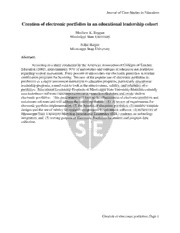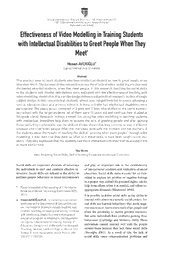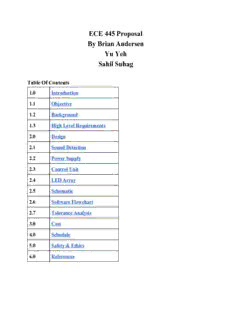
ECE 445 Proposal By Brian Andersen Yu Yeh Sahil Suhag PDF
Preview ECE 445 Proposal By Brian Andersen Yu Yeh Sahil Suhag
ECE 445 Proposal By Brian Andersen Yu Yeh Sahil Suhag Table Of Contents 1.0 Introduction 1.1 Objective 1.2 Background 1.3 High Level Requirements 2.0 Design 2.1 Sound Detection 2.2 Power Supply 2.3 Control Unit 2.4 LED Array 2.5 Schematic 2.6 Software Flowchart 2.7 Tolerance Analysis 3.0 Cost 4.0 Schedule 5.0 Safety & Ethics 6.0 References 1. Introduction 1.1 Objective: The Importance of lighting often goes unnoticed. Light, like sound, has a heavy influence on the vibe of a room and can affect the mood of the people in it. People often take notice of this and attempt to control the vibe of their living space by adding various types of lighting fixtures. However, the mood of a room changes constantly, unlike a fixed light source. Constantly adjusting the lighting to adapt to the sudden changes of the environment is too cumbersome and unreasonable for any sane person. To deal with this issue, we are attempting to create an LED based lamp that can sense various aspects of the changing environment, and adjust itself accordingly. Specifically based on the noise level which changes based on the number of people in the room and based on what they are doing in the same space. The lamp will also be able to change color based on the frequency of loud noise, causing the lamp to “dance” along with whatever music is playing. This lamp would also adjust itself as easily in silence as it would itself dim the LED when the noise level is under a particular threshold, hence the lamp would work like a light sensor in this case and dim the lights incase the noise threshold is very low. 1.2 Background: Being college students we entertain a lot of guests at home and it’s mostly the lights and the music that sets the tone of night. Rather than only music we want our lamp to generally detect the mood in the room with the general noise level. Therefore at times when someone forgets to shut the lamp it will itself dim or luminate based on the noise level in the room currently. It concept of the lamp is to basically adapt to its surroundings based on the number of people and current mood of the room. With the mood we mean the color changing ability based on different environments and situations, here we do not mean to apply a particular algorithm but rather configure the lamp to illuminate/dim/change the color based on the inputs that we detect from the microphone and send to the microcontroller. So the ‘mood’ essentially is deciphered by how we configure the microcontroller for the different types of inputs and that would be done by setting up thresholds for a particular range of frequency which would be different of different types of things, like for example, frequency of conversation vs frequency of music. We were specifically enamored by this project because this is something that we see ourselves using and bragging to our friends and family about. We want this to be that ‘one cool thing’ that we did in college. We understand that there are already products that change light based on some input but no product really that detects noise and changes light based on that input . For that reason we realize that this is more of a luxury project rather than a useful one but it helps us implement everything that we have learnt in college into use and put use of two of the most overlooked but important phenomenon of noise and light into good use. [1] Image 1: Picture of what we want our final product to output 1.2.1 Application: The target audience for our particular product would most likely be college environments. This would be a sort of product that would mostly dazzle people from the ages of 15-30 as the way we see it, it basically comes into use during a gathering when you have music playing where this device adds the ‘wow’ factor to the room. 1.3 High-Level Requirements ● Lamp responds to changes in the amount of sound in the room,Typically the range of the sound of the room would vary from 10dB to 100dB, Where 45dB is the minimum intensity required to awaken a sleeping person. Hence we set our microcontroller to react only to anything above 45dB. Where (45-55)dBs serve as quiet environments where we would just want our lamp to be dim , (55-70)dB’s will serve as conversation where we want our lamp to be bright and (70-90)dB’s to be loud music where the lamp would change its colors based on the changing frequencies. Anything above the 90dB mark the lamp would not change from it’s previous behavior(we don’t expect it should go there) ● Lamp reacts differently to loud music (70-90 dB) than to regular conversation (45-70 dB) ● Lamp reduces brightness during a prolonged quiet situation (<45dB on average for 10 seconds straight) 2. Design The lamp could be divided into four sections: sound detection, microcontroller, LED array, and power supply. The sound detection includes a microphone component to capture noise of environment, and inputs the signal to ADC to feed to the Microcontroller. Microcontroller receives data and conduct mathematical analysis to manipulate LEDs. LED array is the output of the whole system to provide luminance. Power supply is a AC-DC circuit generating steady 5V and 12V voltage to support microcontroller and LED. Figure 1: Design Block Diagram The physical design of the lamp is similar to those sold on the market. Most part of circuits and power supply are inside the basement of the lamp. The led array, which is connected to basement with wire is on the top of a bendable pillar, so the user can change the orientation of light easily. There is a button on the basement for user to change different modes. Figure 2: Physical Design Sketch 2.1 Sound Detection The main feature of the lamp is its ability to respond to sound. This is accomplished using a microphone that detects the sound in the room, and then a filtering circuit to get rid of unnecessary data. Loudness thresholds will be determined by feeding the output of the microphone into a simple decibel measuring circuit. 2.1.1 Microphone We will use a microphone to convert sound into a voltage waveform which we can then parse with Fourier analysis techniques. Requirement Verification 1. Frequency range: 20Hz to 16kHz 1. a. Use App called Sonic in smartphone to 2. Sensitivity: (0dB = 1V/Pa) -30dB to -46dB generate sine waves with different frequency(20Hz to 16kHz) and make the microphone receive the signals . b. Use oscilloscope to measure the outputs and observe if the outputs meet the expectation(sine wave with certain frequency without distortion) 2. Use a decibel meter to verify the intensity levels of the sound 2.1.2 ADC Circuit An analog to digital converter is a essential part in DSP, and how many information lost in the process depends on the number of bit we use to store digital information. In the project we use flash ADC circuit to ensure speed because the device should be able to respond instantly to the sound change from environment. [2] Figure 3: Flash ADC circuit diagram Requirement Verification 1. To convert analog signal to 8-bits digital 1. Use oscilloscope to observe input analog signal signal and sent the analog signal into computer to compare with digital signal from 2. To sample the signal at a rate of at least 20 microcontroller. kHz 2. a. Feed output signal into oscilloscope and check frequency b. Since sampling rate is related to microcontroller, we would write a testing code to verify we have sampling rate with 20 kHz 2.1.3 Decibel Meter Circuit In order to determine whether the loudness has passed certain thresholds, we will design a simple noise measuring circuit that only distinguishes between quiet, noisy, and loud music volumes. The circuit will look like the figure below, but with transistors that will turn on at each of the important sound thresholds. Requirement Verification 1. To convert analog signal to 8-bits digital 1. Use oscilloscope to observe input analog signal signal and sent it into computer to compare with digital signal from microcontroller. 2.2 Power Supply The power supply convert the 120V AC electricity from socket to steady DC voltage to the other parts of the device, and some of them have different voltage requirement. It means that power supply should provide different voltage values including 9V, 12V. 2.2.1 AC-DC Converter Since we want the lamp to be powered through a wall outlet, we will need a 120V/12V voltage regulator. However, we will be buying one off the shelf instead of designing our own in the interest of safety. It can not only convert AC to DC but bear maximum power of the whole device to avoid heat up and explosion. In concern of safety we may apply a ready component in our device. Requirement Verification 120V (AC) (wall outlet) converted to 12 V Using a multimeter where we attach one end (DC) to the ground and the other to the VCC and check if the value meets the expectation. 2.2.2 DC-DC Converter Since the microcontroller required 2.7-5.5V to operate, we need to convert the 12V from voltage converter to steady 5V for proper operation of microcontroller. A simpler method to achieve it is voltage divider circuit, which has low efficiency. To reach max efficiency we would apply a DC-DC converter to get 5V. Requirement Verification 1. Convert 12V to steady 5V. 1. Use voltage meter to measure the voltage value. 2.3 Control Unit The control unit consists of the microprocessor on which all logical operations including FFT will be performed. The microcontroller outputs its signal to a voltage control circuit that delivers different voltage to control LED array. 2.3.1 Microcontroller To deal with signal processing, the most important requirement of microcontroller is it should be able to conduct some heavy mathematical computing (mainly FFT) with high speed. In this project we use teensy as microcontroller. We plan on creating a logic that disregards signals with intensity less than 45db and treat signals with intensity between (50-70)db as conversation ranging from quiet to loud and from (70-90)db. Essentially we plan on having our microcontroller programmed to do the following: Detect what type of a signal it is, whether it is conversation or music or silence. Detection of type of signal is done through thresholds: Everything under 70 db is counted as conversation, where the conversation between 50-55 db is quiet the light should just be dim, 55-65 db is normal where the light should be bright and 65-70 db is loud where the light should be very bright. This luminance control would be handled through the voltage regulator. Everything over 70 db would be treated as music, If the signal lies in the music range then we move on to apply FFT’s on the signal to access the frequency and create logic to change the color of the lights according to whichever frequency in the spectrum has the highest decibel value. During a prolonged period of silence(<50db) the light would itself become really dim. Requirement Verification 1. Could conduct FFT with delay time 1. Write testing code to record the real time of between input and output signal < 0.1s FFT which MCU computing. 2. Fetch the Specifications to verify. 2. Have at least three analog output. 3. Connecting MCU to computer and 3. We expect our code for the microcontroller check the size of program. to be under 20 kbytes which can be directly 4. Input voltage between 3.3v to 5v to accessed from the Teensy 3.1/3.2 RAM which MCU and check if the MCU operate is 64 kbytes. successfully. 4. Operate voltage is between 3.3v to 5v 2.3.2 LED Control Circuit This part includes MOSFET as bridge connecting the analog output of microcontroller and LED array with current limit awareness, and a decoder with MOSFET as switch to make LED light up turn by turn. Figure 4: Mosfet as switch Requirement Verification
Description:The list of books you might like

The Mountain Is You

The Subtle Art of Not Giving a F*ck

Rich Dad Poor Dad

A Thousand Boy Kisses

New Jersey Numismatic Journal: Vol. 31 No. 2
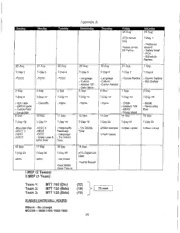
DTIC ADA490884: Advisor 2.0: Advancing the Military Transition Team Model

A Maid of the Silver Sea by John Oxenham

COMESA 233: Leather -- Sampling -- Number of items for a gross sample
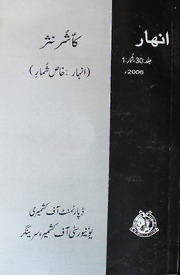
Anhaar 2006 Kaeshur Nasr
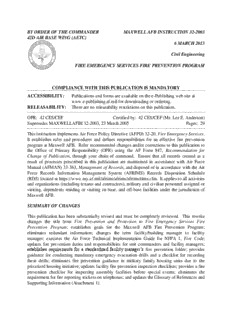
BY ORDER OF THE COMMANDER MAXWELL AFB INSTRUCTION 32-2003 42D AIR BASE WING ...

Cento Anni di Ricerca Petrolifera(1)
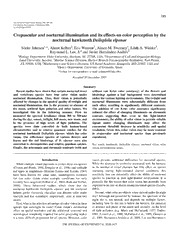
DTIC ADA519442: Crepuscular and Nocturnal Illumination and Its Effects on Color Perception by the Nocturnal Hawkmoth Deilephila elpenor
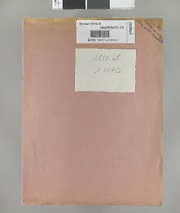
Vitis vinifera subsp. vinifera cv. Marselan
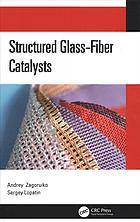
Structured glass-fiber catalysts

Live and let live
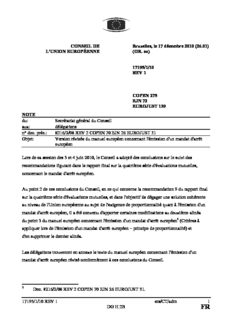
17195/1/10 REV 1 ers/CT/adm 1 DG H 2B CONSEIL DE L'UNION EUROPÉENNE Bruxelles, le 17 ...

The Brooklyn Paper Volume 29 Issue 03
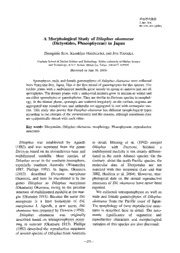
A Morphological Study of Dilophus okamurae (Dictyotales, Phaeophyceae) in Japan

The Dancing Floor

ERIC EJ746033: Should Academic Unions Get Involved in Governance?

